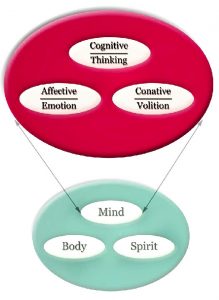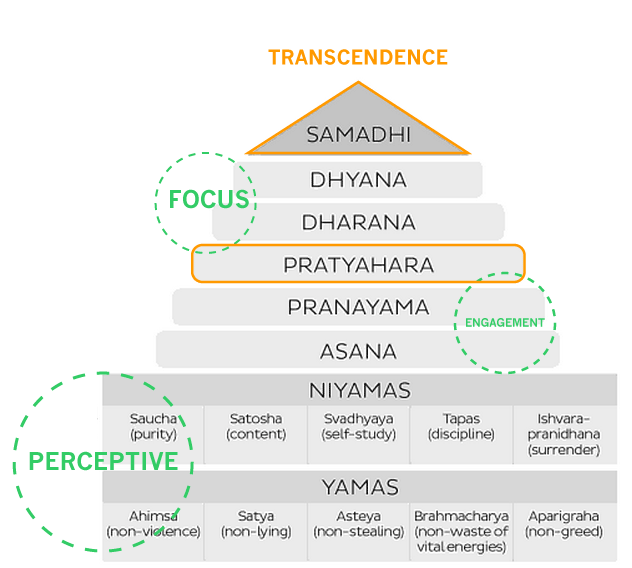The Brain: As It Is And Beyond
- July 12, 2017
- Posted by: admin
- Category: Featured Content,

By Arutchelvan Rajamanikam
The central organ of the human nervous system is responsible for processing, integrating, coordinating and regurgitating information sent by the sensory organs. It is an organ that epitomises the central processing unit (CPU) in computers – these definitions frequent our ears whenever questions on the human brain surfaces.
Little did we know that human brain, which weighs about 3.3 lbs (approximately 2kg) makes up about 2% of an average human’s body weight. It contains 86 billions of neurons (cells in the brain that carry out the above-mentioned functions) (1). As the common phrase goes, there are as many neurons in the human brain as the numbers of stars in the Milky Way. While the phrase brings a sense of enormity, it reflects on the myriad capacity of the brain beyond the functions that we come across in textbooks.
In early 1900s, some psychologists and scientists said that only 10% of mental capacity is available in an average human. According to this fact, a large part of the brain remains fallow and is used for psychic powers and abilities. However, scientific experiments, with the help of advanced imaging technology demonstrated this urban legend was a total myth. Humans definitely, if not 100%, use more than 10% of their brain’s capacity. Although, certain trivial functions may use only specific part(s) of the brain at one time, most sufficiently complex processes or thought processes may engage many parts of the brain. Just like the muscles in the body, which are not entirely utilised during certain activities.
Cognitive or conative? Essential skills for the 21st century
As described by most psychologists, traditionally, the human brain capacitates three main components: cognition, affection and conation (2). Cognition refers to the intellectual processes of coming to know something by means of perceiving, encoding, storing, retrieving and processing information, which is normally associated with the question of “what”. For example, “What is the meaning of something?”, “What it does?”, “What is the outcome?” and so on. Affection, on the other hand, refers to emotional interpretation of perceived information and is usually set side by side with the question of “How do I feel about this knowledge?” It associates with positive or negative attachment to a certain object, person or idea.

The third component, conation, builds the connection between knowledge gained and the affection towards that knowledge. It gives a sense of “purpose” that often refers to the question of “why”. Conation in the mental process, gives humans the impulse, desire, wills, volition and striving capability. These three compartments – cognition, affection and conation – are coequal and fall, in an intricate balance, under the umbrella of consciousness (3).
Over the course of time, importance to brain cognition and emotion has increased remarkably whilst conative ability of the brain lagged behind.
Researchers believe that conation, defined as the use of will or the freedom of a person to make choices, is the essential human behavior as well as study of self (self-esteem, self-control, self-reflection, self-determination) (4).
The human mind is viewed as the agent to get things done, transform itself and/or the environment amidst the resistance from the conflicting self and environment. However, shortfall in conative ability has reduced one’s self-regulation and therefore disrupts the ability and freedom to choose and control one’s thoughts and behaviour. At this point, it is an absurdity to view that cognition is less important. Abraham Maslow, the creator of “Maslow’s hierarchy of need”, has suggested that cognition is itself conative as the desire to know (cognitive domain) comes from the act of will and self-motivation (conative domain).
Instincts and reflexes relatively control minds of animals. These are greatly reduced in humans, through learning and choice, ultimately preventing the degradation of creativity. This situation elevates importance of conation, especially in current chaotic cultural and social milieu. Scientists described the approach towards conation component of the brain in different stages namely, perception – openness to multiple senses and intuition stimulus; focus – the ability to distinguish stimuli from the background; engagement and involvement – ability to closely engage and examine a goal, its action plan and execution depending on self regulation and volition. Lastly, there is transcendence – being completely immersed in a task, in such a manner that body, mind and the task become one (5).
It is interesting enough to know that a psychological study published only 20 years ago, clearly emulates the tradition practiced for thousands of years by yogis and siddhas.

The different stages discussed by the scientist reflect on the 8 limbs of yoga – Yama, Niyama, Asana, Pranayama, Pratyahara, Dharana, Dhyana and Samadhi – as detailed by the sage Patanjali. Yama and Niyama explain the perceptive domain. Dharana and Dhyana give rise to the domain of focus. Practice of Asana and techniques in Pranayama lead to development in the domain of engagement and involvement. Last but not least, Pratyahara and Samadhi refer to the transcendence, through which ultimately the unity between body and mind is reached. A variety of researchers such as Maslow, Assagioli, and Csikszentmihaly have described this stage as peak experience; joyous, transpersonal will; and flow, respectively.
Despite conative ability of the brain, cognitive ability, however, gains regard as the ultimate and supreme function of the brain. Arguably, most, if not all neuropsychiatric disorders such as schizophrenia, depression and anxiety are cognitive in nature. It is now coming into realisation that delusion, hallucination as well as motivational and emotional signs are associated with cognitive elements. Heightening of cognitive ability proved to be linked with mental and physical wellbeing. Theories on extraordinary cognition often relate to extraordinary ability or siddhi.
As for the yoga system, the material component of a person (prakriti) is composed of three qualities, the three gunas: sattva (purity), rajas (energy) and tamas (inertia) (6). Everything material in a person, including the mind, is a mixture of these three gunas. People with greater sattva have a positive view, are well-disciplined, relaxed, calm and lead a healthy lifestyle. In contrast, difficulty in relaxing, craving for short-term pleasure and involvement in energy-draining activities are due to an elevated level of rajas. Lastly, people with high level of tamas tend to be dissatisfied with life and are ignorant of their health. It is with heightened level of sattva that an individual will settle in higher realms of spirituality, thus gaining access and dwelling in purusha (pure consciousness or the non-material part). According to Samkhya-Yoga, prevalence of sattva guna increases with yoga practice, thus, in the long run immersing oneself with siddhis (as mentioned above).
Multitasking = productivity?
Some laymen say, “Brain is the strongest part in the body”. Many tend to disregard the essence behind this old adage with daily routines that keep the body and mind disconnected. One such routine is multitasking.
People fall into a belief of accomplishing two tasks in a specified time frame in the drive and chase towards productivity.
And yes, two tasks is being completed, you may even close a thousand dollar deal in a phone conversation while being behind the wheels, but people do not achieve this with optimal focus and effectiveness. Brains do not perform tasks simultaneously, but handle tasks sequentially. Brain actually juggles between tasks very rapidly, leading to erroneous belief that we are actually multitasking. In reality, the brain switches attention to different tasks – it is attentive to a singular task at one time. Some regard multitasking a form of distraction and brain drain as it overloads the brain, causing a bottleneck and eventually interrupting cognitive processes, during which, important information may fall out of view without awareness (7). Over time, the consequences of multitasking gradually impair the cognitive performances that might lead to various disorders in the mind (stress, anger, depression, ego and etc.), later in the body and eventually the society.
A famous English movie titled “Lucy”, released in 2014 glimpsed on elevated cognition in the main role resulting in miraculous abilities such as telepathy, clairvoyance, precognition, clairaudience and telekinesis. These abilities do not only exist in screens. The human mind, if properly trained, posseses the likelihood to achieve outstanding abilities. According to the Yoga Sutra, apart from individual inbred potential or consumption of certain herbs, systematic practice of yoga also instills such power.
A baby, as Deepak Chopra puts it in his book “Why is God Laughing?: The Path to Joy and Spiritual Optimism”, is a field of infinite potential expressing highest form of intelligence in nature. A baby, in this context is similar to human brain. Guarding the thought, improving cognitive and conative performances and elevating the levels of purity (sattva), exposes one to a Rosetta’s stone of pure consciousness. Yoga, acting as an excellent tool, paves the way in exalting the human brain to its true capacities. The sage Patanjali, started the first chapter of Yoga Sutra with a half sentence “…and now Yoga”. This means, when life goes out of control, when you know nothing is working and in the fullness of time, when the mind is filled with dissonance warding off its full capabilities, you now know, there is a way and it is called ‘Yoga’.

References
- Voytek, B. (2013, May 20). Are There Really as Many Neurons in the Human Brain as Stars in the Milky Way? Retrieved from https://www.nature.com/scitable/blog/brainmetrics/are_there_really_as_many
- Tallon, A. (1997). Head and heart: Affection, cognition, volition as triune consciousness. New York: Fordham University
- Huitt, W., & Cain, S. (2005). An overview of the conative domain. Educational Psychology Interactive. Valdosta, GA: Valdosta State University. Retrieved on 25th May 2017 from http://www.edpsycinteractive.org/brilstar/chapters/conative.pdf
- Bandura, A. (1997). Self-efficacy: The exercise of control. New York: W. H. Freeman.
- Atman, K. (1987). The role of conation (striving) in the distance learning enterprise. The American Journal of Distance Education, 1(1), 14-28 Rao, K. R., Paranjpe, A. C., and Dalal, A. K. (eds.). (2008). Handbook of Indian Psychology. Delhi: Cambridge University Press. Wickens, C. D. (2008). Multiple resources and mental workload. Human Factors, 50 (3), 449-455
